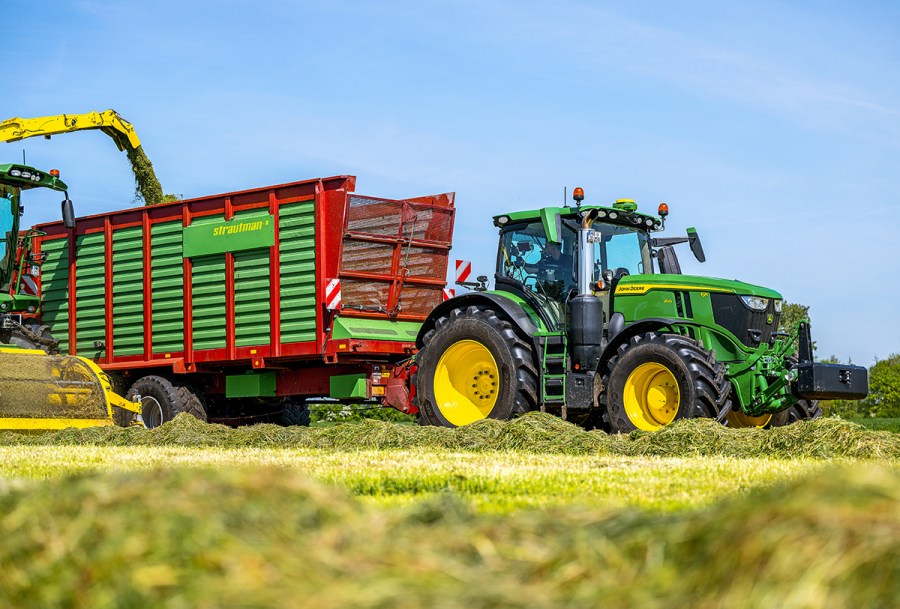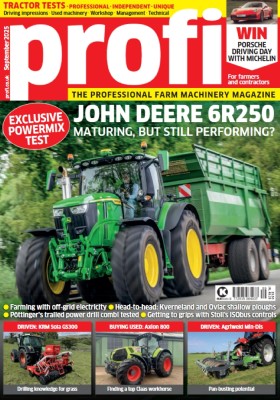On the market since 2017, the big-frame six-cylinder 6R has become the best seller in the 6R range. Reason enough, then, to take a fresh view on this refined Mannheim heavyweight in its sports package.
KEEPING IT BRIEF
- The 6R250 boasts good performance results.
- Sports package improves straight line stability and steering behaviour at higher speeds.
- The steering system and related software are almost perfect.
Seven years have passed since our last JD 6250R tractor test in profi 8/2018. Back then we went with the headline ‘That Vario feeling’, as it wasn’t hard to see who Deere was targeting. And it has had some considerable success. Yet those crafty folk from Marktoberdorf have been doing some hunting of their own of the Mannheim-created deer, and, should the rumours be true, more hunters are soon to be added to the pack.
Anyway, the 6R250 is fundamentally still the same tractor as it was then, but John Deere has learned a few lessons. So let’s take a look at the arguments put forward for the ‘experienced’ 6R250. Under the bonnet is the familiar six-cylinder, 6.8-litre motor armed with two turbochargers and a rated output of 250hp, which then climbs up to a maximum output of 275hp without boost. That boost kicks in when hydraulic power is needed, during pto work at over 2km/hr or when travelling at speeds of 15km/hr+. In this case, the 6R250 delivers around 300hp, of which 265hp arrived at the tail end — very good.
Nothing more, nothing less
And what about fuel consumption with the same hardware? 244g/kWh use (+8g/kWh AdBlue) at the rated speed and 235g/kWh (9.4g/kWh AdBlue) at maximum pto output are almost exactly the same results as in 2018. No record-breaking fuel figures, but they’re still acceptable.
The results from the rolling-road test bed haven’t changed either. Although our 2025 test model improves its Powermix result by 1g, 256g/kWh proves that the deer has nothing to hide, especially as it consumes just 10g/kWh of AdBlue — despite stricter Stage V compliance. The latter is achieved with the help of exhaust gas recirculation, a diesel oxidation catalyst (DOC), a diesel particulate filter (DPF) and SCR catalyst.
Things get a bit more interesting when it comes to the maximum drawbar power through the continuously variable ZF Eccom transmission with its four automatically shifting travel ranges. The DLG engineers measured 165.5kW/221.9hp at 10km/hr and almost 174kW/233hp at 16km/hr as the boost was already kicking in. At 254 and 250g/kWh respectively, fuel use was also at a very good level.
Fuel-efficient road work
John Deere is promoting the 6R250 with a ‘Sport Package’, among other things. This package includes a new steering column and small leather-clad steering wheel as well as wider wheel rims, which actually give the 6R230 and 6R250 models better roadholding.
But it’s not just good operator comfort on the road; fuel consumption on tarmac is also good: 350g/kWh use at 40km/hr and 353g/kWh at 50km/hr. And since a lot more tractors have done the Powermix Transport test, the newer big 6R performed better than it did in 2018. The fuel consumption is an impressive 24% better at 40km/hr and even 18% less at 50km/hr than our current average.
However, we also have to dish out some criticism. Although John Deere can fit a PTG tyre pressure control system as a factory-fitted option, there is no additional higher capacity compressor available.
And speaking of tyres, the test tractor was wearing Michelin Axiobibs, VF600/70 R30 at the front and VF710/70 R42 at the rear. Our rims weren’t yet fitted with the valves on the outsides of the rims, making tyre pressure changes a faff. Also annoying was that, up at 50km/hr travel, the tyres caused unpleasant vibration noise in the cab.
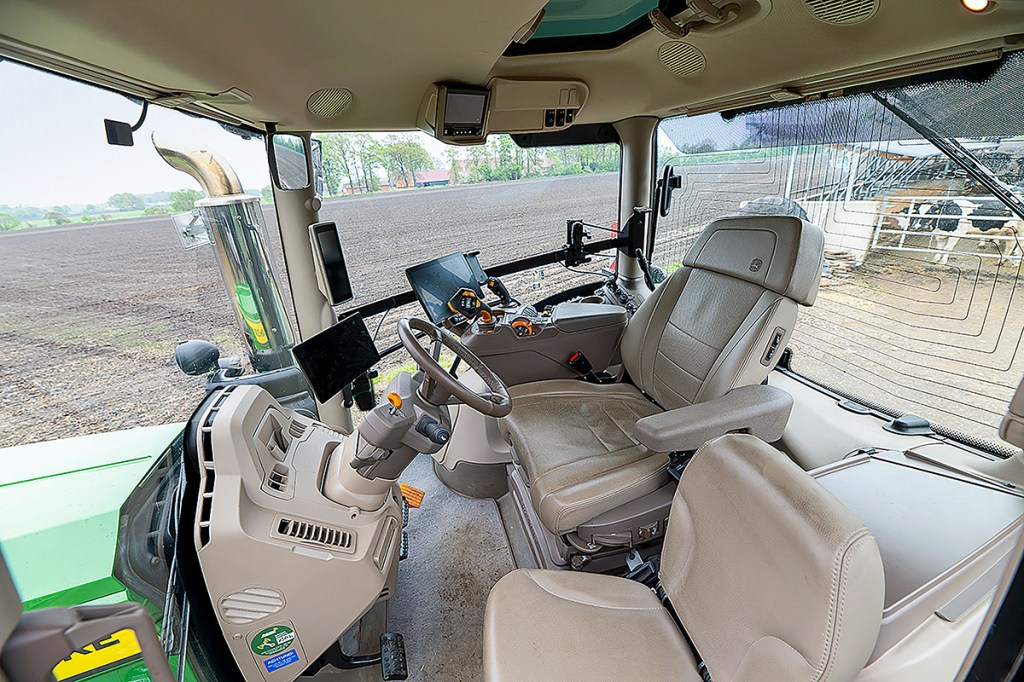
Dream cab
Moving on up, it’s not just John Deere users who feel at home in the cab. In terms of build quality, the 6R cab continues to set the standard, but it’s a shame the seat rail can only be extended with the help of a dealer-fitted solution, and the area cleaned by the wiper remains too small.
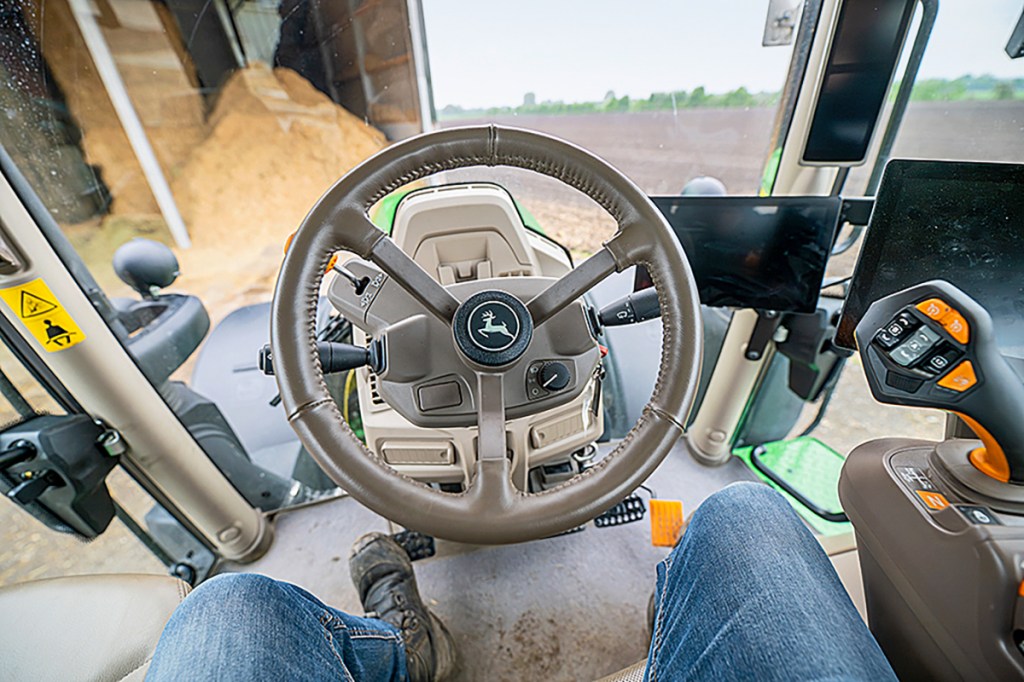
The small leather steering wheel feels good in the hand, although if you are hopping between 6R models that have a big or small steering wheel, the varying distance to the powershuttle can mess with your head. It’s a good thing that direction changes can be selected not just on the small control lever but also the CommandPro — either with the familiar left flick or by moving it to the left and then pulling back. Other functions that got a thumbs-up from our test team include the coasting mode (push the joystick to the front left), maximum speed activation by kicking the stick forward past the detent and quick speed range adjustment by turning the scroll wheel.
Superior and way ahead of the Vario is the ability to switch between joystick and pedal modes. This makes driving incredibly easy and customisable. The active standstill with automatic parking brake and, consequently, start-off without operating the clutch, were also praised. The 6R currently doesn’t have an automatic engine start/stop.
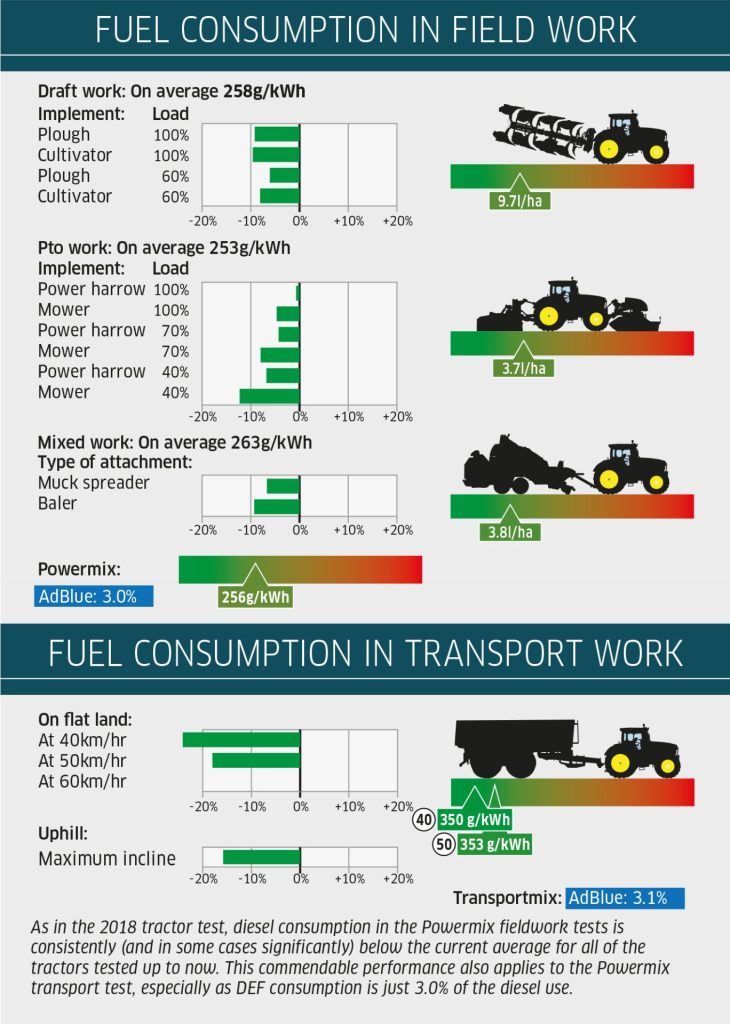
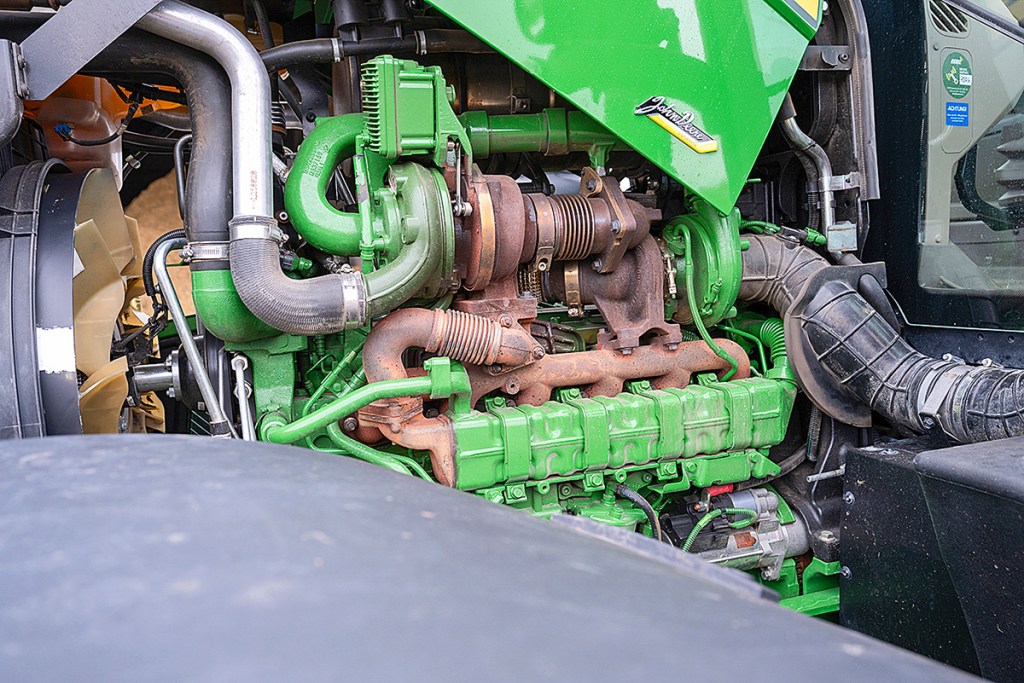
Many functions
The joystick’s numerous functions and up to five toggle switches, some of which are hidden round the back of the lever can be individually assigned. While the driver may have learned to feel the switches after a few hours, occasional novice users could find themselves accidentally activating them. This is one of the potential downsides of such a flexible operating concept.
At least some of the buttons are backlit — for example, when the pto control is on the joystick. A small LED screen in the stick would probably be the icing on the cake and possibly a project of the future. But if you don’t need the CommandPro with its full array of aux-in functions, you can still opt for the old Command Arm set-up and save yourself £1,774.
The G5 Plus display is perfect. Not only is it HD sharp, even in strong sunlight, but the boot-up time after starting the engine is impressively short, too.
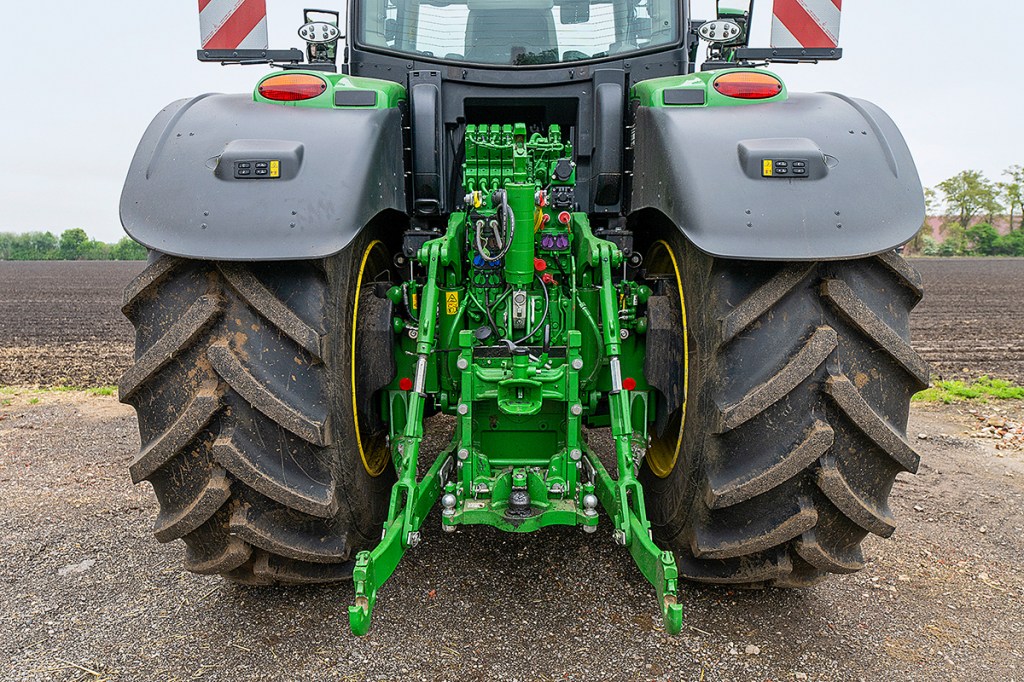
OPS and Autopath Boundaries
Operators and job organisers will now be getting used to hearing about John Deere’s Operations Centre facility. Whether it’s data transfer of jobs, maps for drilling or even just navigating to different fields via the familiar Google Maps interface, John Deere is simply ahead of the competition when it comes to this sort of tech.
And if you have questions about operating the 6R250 when away from the yard, then you can have the necessary steps explained via Remote Display Access, although video calling from a smartphone could achieve much the same thing. Another useful driver aid is the ‘help’ function on the terminal, which is ideally positioned with a question mark and saves time flicking through the operator’s manual.
Automatic lane planning including headland manoeuvres using AutoPath (Boundaries) and AutoPath (Rows) completes the steering system package. The only things missing for the ultimate American ‘way of farming’ are the ‘Harley bar’ footrests down in the right footwell; these appear on the bigger Deere models.
Finally, with autosteer engaged, the seat can swivel up to 40° to the right so you can keep an eye on the implement. If the tractor then auto reverses at the headland, you’re close to autonomous driving; it’s just a pity that the ITEC functions can only be triggered by distance, but not by time.

Hydraulically more is possible
The rear linkage manages a lift range of just 75cm and, at 7,659daN, lifts less than its competitors. Thanks to almost 10,000daN within the upper range, bigger cylinders can also handle heavy attachments in this power class. Thumbs-up for the simple way of altering the lower link spacing and the spring-loaded top link to ease handling. If there was an easier way of putting the lift arms in their top position without having to juggle lynch pins, that would be great.
As for hydraulic couplers at the rear, the 6R250 offers five spool valves and Power-Beyond couplers (six valves without Power-Beyond). The couplers also have a pressure relief lever as well as handy time and flow adjustment. The swash plate pump delivers up to 195l/min.
The neatly integrated front linkage is also available with two additional couplers as an option. It is a bit of a head scratcher that the free-return line obstructs the front clevis so that the pin can only be inserted from below.
John Deere’s sales pitch for the 6R250’s Sport Package is that it provides smooth, straight-line stability and improved steering precision — courtesy of the new steering linkage with fewer joints. We can confirm this trait.
Compared with the smaller 6R175, however, the front axle suspension with its external cylinders is still very firm. The same applies to the brakes: with a tap of the foot, they bring the near 9.6t tractor to a standstill with a deceleration of 5.45m/s².
Speaking of weight, the nifty EZ-Ballast drive-over weight from the 7R is now also available on the 6R. This allows the tractor to hydraulically couple just under 2 tonnes quickly and easily, with the major benefit being that the weight distribution is ideal for heavy drawbar applications. However, this convenience is £2,090 and can’t be fitted if you have a pickup hitch.
A gross weight of 15 tonnes translates into an impressive payload of 5.4 tonnes.
Similarly impressive is the turning circle of 13m — although the much-cited competition does turn tighter. On the other hand, the 6R250 with its LED lights dwarfs many a competitor.
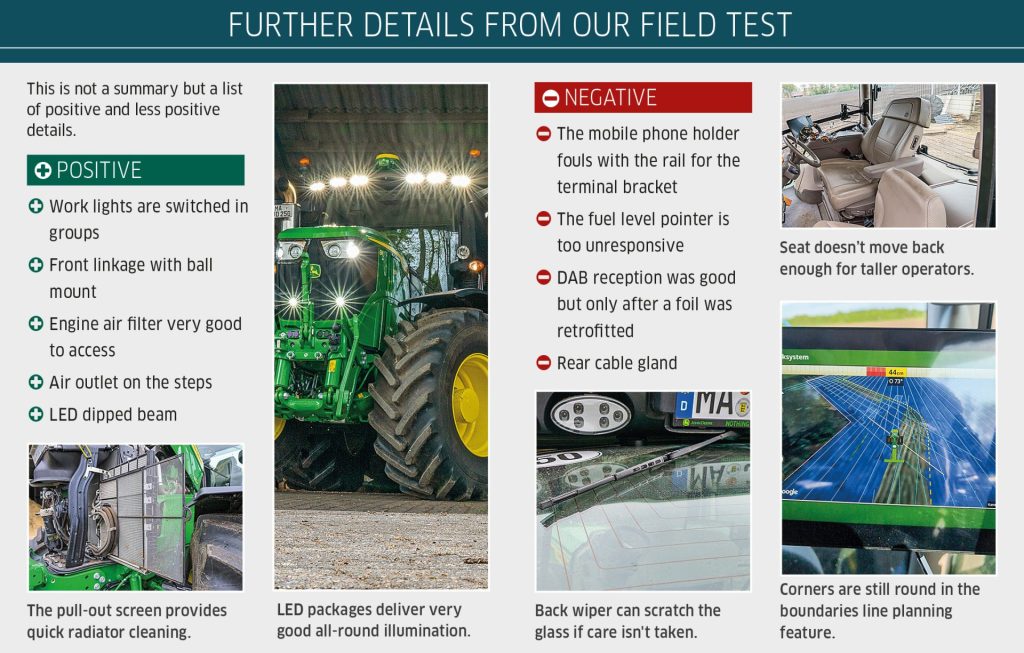
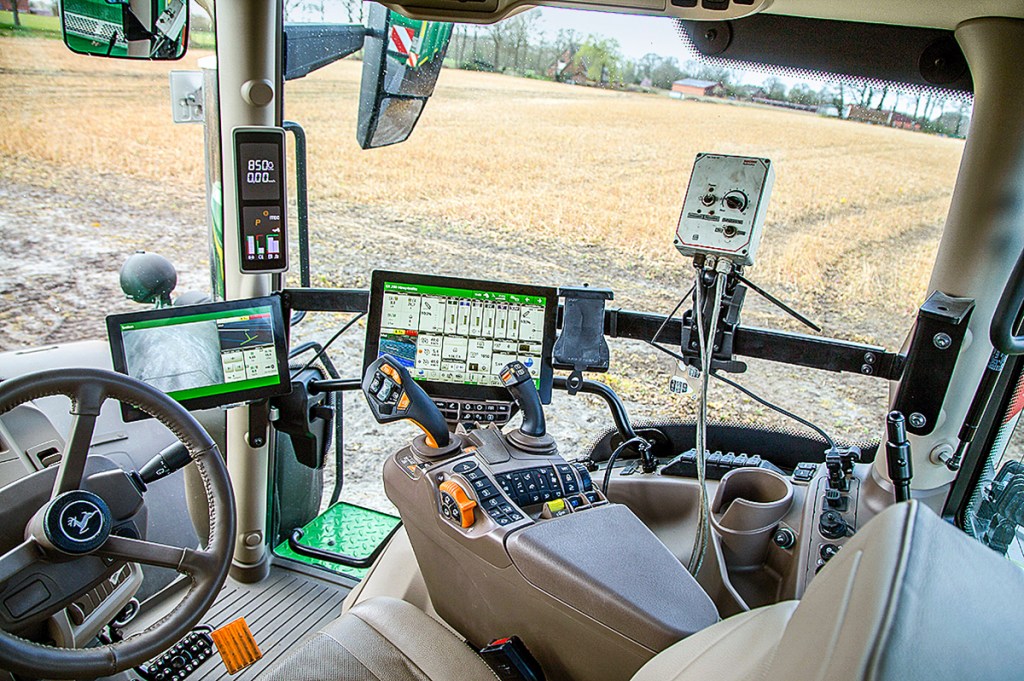
How much?
The basic version of the 6R250 is priced at £259,412. Buyers can then tuck into the options list, adding bits like a front linkage, Starfire receiver, CommandCenter with G5 Plus screen including a G5 extra monitor, leather package, Ultimate seat and stainless steel exhaust stack, so you get the Signature Edition sticker. The bottom line for our test tractor according to the configurator is a hefty £325,595.
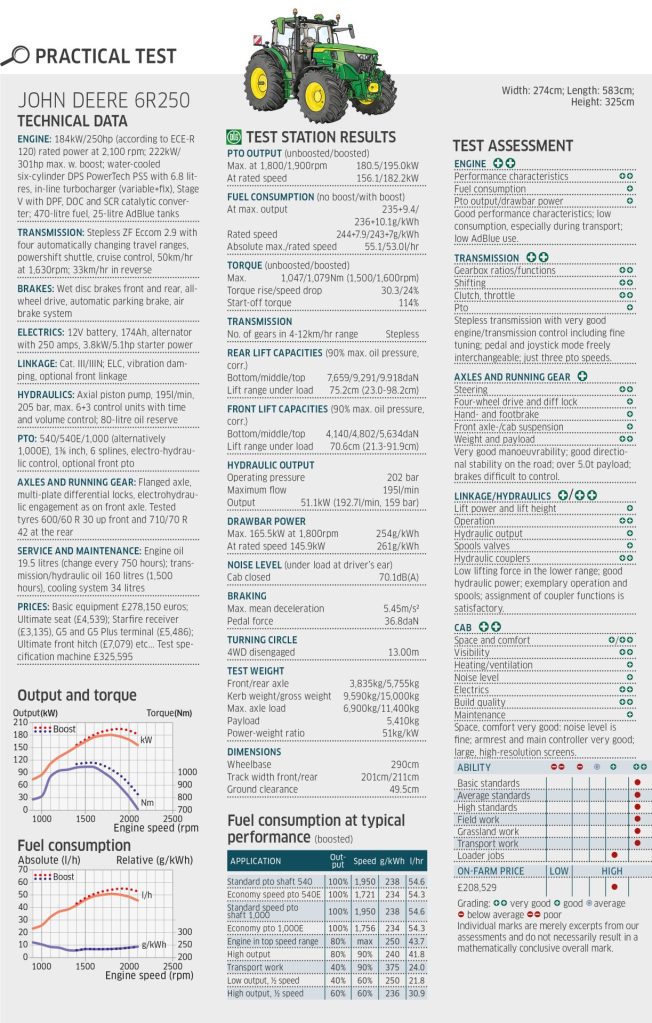
Summary
Deere’s Mannheim-built 250 has been on the market for a good few years now, but it is maturing nicely. The test results are still impressive, even if you can see that the competition is working hard to win back any customers who have turned green and yellow. That said, the 6R has several reasons why it should remain as a best-seller: the Operations Centre, the well-finished cab, the G5 terminal and more.
How things change can also be seen in the price tag. Back in 2018, a base spec 6250R was just under £200k; fast forward to now and the 6R250 starts from closer to a scary £260,000!

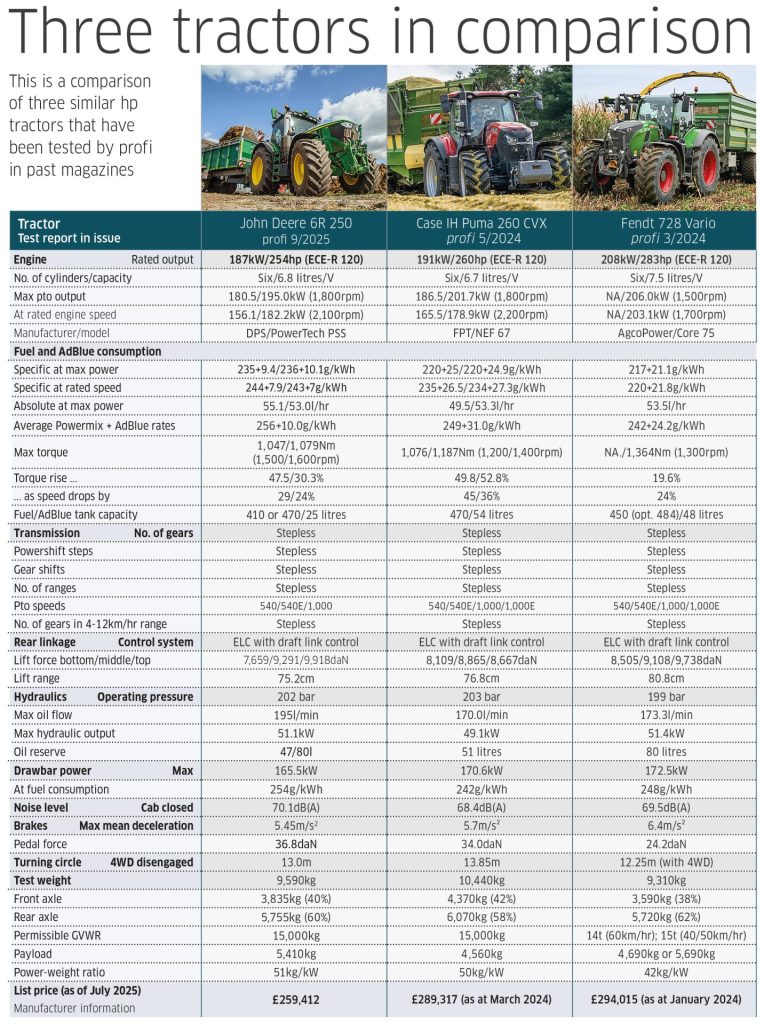
Tobias Bensing
For more up-to-date farming news click here and subscribe now to profi and save.

